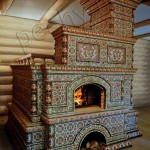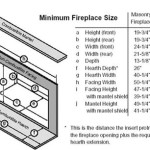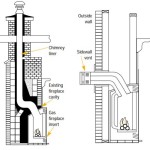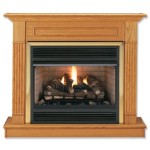Basement Fireplace Ideas: Creating a Cozy and Functional Space
A basement fireplace can transform a cold, underutilized space into a warm and inviting extension of the home. Beyond simply adding heat, a fireplace can become a focal point, significantly enhancing the aesthetic appeal and functionality of a basement. Careful planning and consideration of various factors are crucial to creating a basement fireplace that is both safe and visually appealing. This article explores various fireplace options and considerations for integrating them into a basement setting.The first step when considering a basement fireplace is to assess the existing structure and building codes. Basements, often located below ground level, may have specific ventilation requirements and restrictions related to fuel sources. Local building codes dictate the necessary clearances from combustible materials, the type of chimney or venting system required, and any necessary permits. Failure to comply with these regulations can result in costly rework and potential safety hazards. Consulting with a qualified contractor and obtaining the appropriate permits are essential before beginning any fireplace installation project.
Furthermore, consider the existing infrastructure of the basement. Does it already have a chimney? If not, installing one can be a significant expense. Alternative venting systems, such as direct vent systems, may be more practical and cost-effective. The availability of gas lines or electrical outlets will also influence the type of fireplace best suited for the space. Planning for these infrastructural needs early in the process will prevent unforeseen challenges and ensure a smoother installation.
Selecting the Right Type of Fireplace
Several types of fireplaces are suitable for basement installations, each with its own advantages and disadvantages. The choice depends on factors such as cost, installation complexity, fuel source availability, and aesthetic preferences.
Wood-Burning Fireplaces: Traditional wood-burning fireplaces offer an authentic ambiance and can provide significant heat. However, they require a chimney and can be more challenging to install in a basement setting, particularly if there is no existing chimney. They also require a constant supply of firewood and regular cleaning to remove ash and creosote buildup, which can be a fire hazard. Local regulations may also restrict wood-burning fireplaces due to air quality concerns.
Gas Fireplaces: Gas fireplaces offer a convenient and clean-burning alternative to wood. They can be vented through a chimney or a direct vent system, which vents directly to the outside through a wall. Gas fireplaces are available in a wide variety of styles, from traditional log sets to modern linear models. They are easy to operate with a remote control or wall switch and provide consistent heat output. Gas fireplaces can be fueled by natural gas or propane, depending on what's available.
Electric Fireplaces: Electric fireplaces are the simplest and most versatile option for basement installations. They require no venting or fuel lines, making them relatively easy to install. Electric fireplaces can be plugged into a standard electrical outlet and offer a realistic flame effect with or without heat. They are available in various styles, including wall-mounted units, freestanding models, and fireplace inserts. While they provide supplemental heat, they typically do not generate as much heat as wood-burning or gas fireplaces, but are often sufficient for heating a smaller basement area.
Ethanol Fireplaces: Ethanol fireplaces utilize liquid ethanol fuel, offering a ventless and portable solution. They produce a real flame and don't require a chimney or venting system. However, ethanol fireplaces provide less heat than other types and require careful handling of the fuel. They are best suited for adding ambiance rather than providing significant heating.
Design Considerations for a Basement Fireplace
Integrating a fireplace into a basement design requires careful consideration of the surrounding space. The fireplace should complement the overall aesthetic of the basement and enhance its functionality.
Focal Point: A fireplace naturally serves as a focal point within a room. Consider the placement of the fireplace to maximize its visual impact. A centrally located fireplace can anchor a seating area, while a corner fireplace can create a cozy nook. The surrounding materials and design elements should enhance the fireplace's presence.
Materials and Finishes: The selection of materials for the fireplace surround and mantel is crucial for creating the desired aesthetic. Brick, stone, tile, and wood are common choices. The style of the materials should complement the overall design of the basement. For example, exposed brick can create a rustic look, while sleek tile can create a modern feel. The mantel can be used to display decorative items and further enhance the fireplace's visual appeal.
Lighting: Proper lighting is essential for highlighting the fireplace and creating a warm and inviting atmosphere. Recessed lighting can illuminate the surrounding area, while accent lighting can draw attention to the fireplace itself. Consider adding a dimmer switch to control the lighting levels and create different moods.
Seating and Layout: The placement of furniture around the fireplace should encourage conversation and relaxation. Arrange seating to take advantage of the warmth and ambiance of the fireplace. A comfortable sofa, armchairs, and a coffee table can create a cozy seating area. Consider adding a rug to define the space and add warmth and texture.
Safety and Maintenance
Safety is paramount when installing and using a basement fireplace. Regular maintenance is essential for ensuring the safe and efficient operation of the fireplace.
Carbon Monoxide Detectors: Install carbon monoxide detectors in the basement to alert occupants to the presence of this dangerous gas. Check the detectors regularly to ensure they are functioning properly.
Chimney Inspections: If the fireplace uses a chimney, have it inspected annually by a qualified chimney sweep. This will help identify any potential problems, such as creosote buildup or cracks in the chimney liner. Clean the chimney regularly to prevent chimney fires.
Clearance from Combustibles: Ensure that the fireplace has adequate clearance from combustible materials, such as furniture, curtains, and wood paneling. Follow the manufacturer's recommendations for clearance distances.
Fire Extinguisher: Keep a fire extinguisher readily accessible in the basement. Ensure that all occupants know how to use the extinguisher properly.
Regular Cleaning: Clean the fireplace regularly to remove ash, soot, and debris. This will help maintain its efficiency and prevent potential hazards. Follow the manufacturer's instructions for cleaning and maintenance.

Fireplace Basement Design Ideas S Remodel And Decor Ventless

20 Amazing Finished Basements That Have A Fireplace Finishing Basement Wall Decor Living Room Diy

Basement Fireplace Renovation Ideas Moose Basements

8 Amazing Finished Basement Ideas To Prompt A Remodel

Basement Fireplace Renovation Ideas Moose Basements

20 Amazing Finished Basements That Have A Fireplace Small Basement Remodel Built In Electric Design

13 Stunning Fireplace Accent Wall Ideas For Your Home Carla Bast Design

Basement Rustic Home Theater Fireplace Minneapolis By Fbc Remodel Houzz Ie

13 Stunning Fireplace Accent Wall Ideas For Your Home Carla Bast Design

Basement Fireplace Design Ideas








